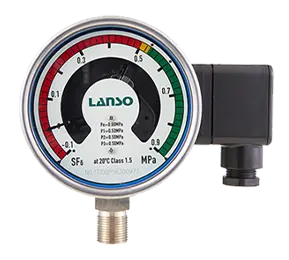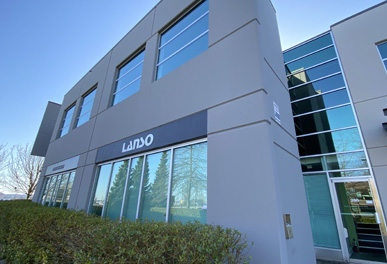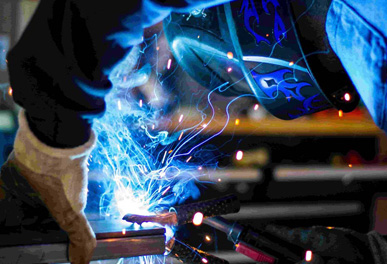SF6 Density Relayplays an important role in SF6 electrical equipment, and calibration is crucial to ensure its accuracy and reliability. LANSO as a professional manufacturer, provides a calibration operation manual forSF6 Density Relay to ensure the performance and safety of the equipment.
SF6 Density Relay Calibration Procedure
Gas Supply Disconnection: First, disconnect the gas supply of the tested facility's density relay and the equipment itself. (Usually accomplished by three-way valve switch)
Power Disconnection: Disconnect the power supply of the tested facility's density relay control circuit. (At this time, the pointer of the meter remains at the rated pressure or above the pressure that triggers contact action)
Gas Supply Connection: Connect the density relay calibrator to the gas supply of the tested density relay.
Power Connection: Connect the power socket of the density relay calibrator to the corresponding contact point of the tested density relay.
Pressure Adjustment: Adjust the working pressure of the density relay calibrator's air cylinder to make it decrease to the alarm or locking working pressure of the tested density relay.
Record Values: Record the working pressure value at which the density relay reaches the alarm or locking pressure, or the P20 value(the working pressure value when calibrated to 20℃).
Pressure Gauge Verification: For equipment installed with pressure gauges, record the range of the pressure gauge and compare it with the working pressure value of the density relay calibrator. Pressure gauge verification should be conducted in 5-8 items.
Verification of Uninstalled Density Relay: For the verification of uninstalled density relay, follow steps 3-6 items.
SF6 Density Relay Calibration Result Analysis
The calibration result of the density relay should be compared with the accuracy range of the density relay's manufacturer for rating, alarm, and locking requirements. For pressure gauge verification, it is only necessary to obtain the range of the pressure gauge and compare it with the working pressure value of the density relay calibrator.
SF6 Density Relay Common Calibration Issues
When calibrating the density relay, the following common issues should be noted:
Caution should be taken in choosing the connection position of the density relay calibrator's contact point power socket during calibration to prevent incorrect connection to the density relay.
The working pressure and temperature range of the used density relay calibrator should be calibrated by the metrological testing unit. The calibration period should be determined according to the measurement calibration cycle of our country.
If the calibration result does not match the factory value, verification should be conducted. When it is confirmed not to meet the requirements, it should be resolved according to regulations to meet the requirements of SF6 electrical equipment.
By following the above calibration operation manual, the performance and accuracy ofSF6 Density Relay can be ensured. This helps maintain equipment reliability, improve operational efficiency, and ensure operator safety. LANSO will continue to provide high-quality SF6 monitoring solutions to various industries to meet customer needs.







